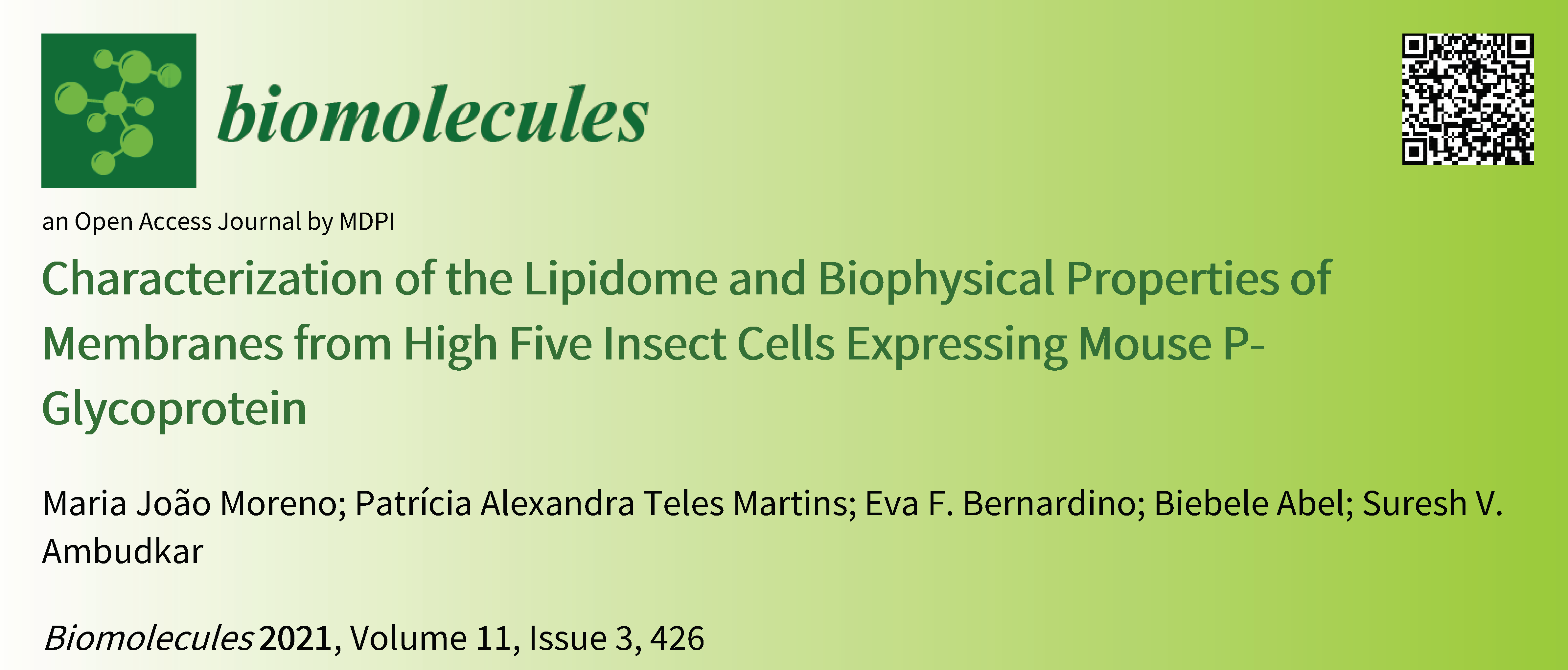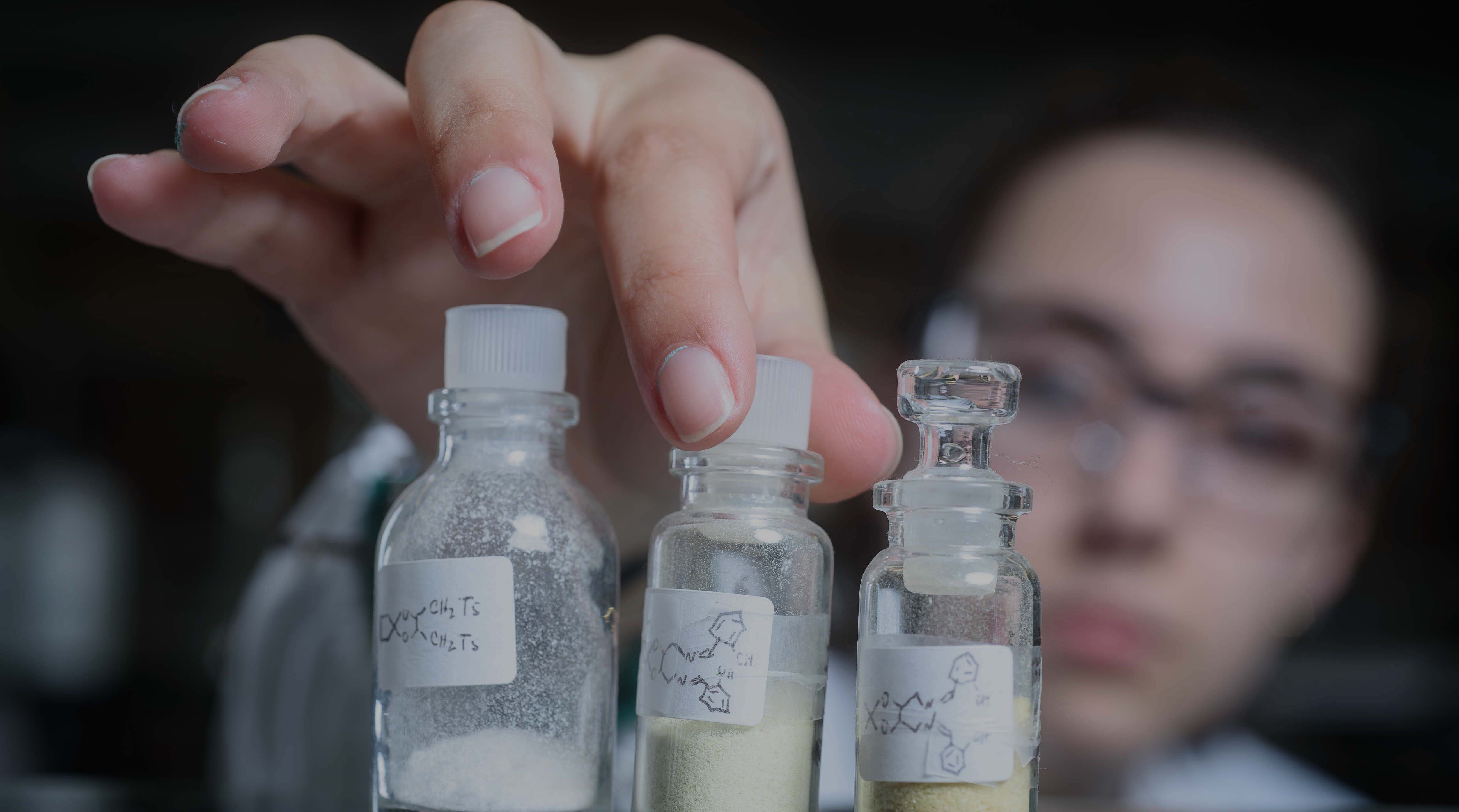The structure and Function of Biomembranes is the major scientific interest of this research group. The focus is on the lipid bilayer of biomembranes, although membrane proteins and whole biomembranes are also being addressed. Research methodologies include experimental (fluorescence based, Isothermal Titration Calorimetry, HPLC) and computational (kinetic modelling and molecular dynamics) tools. The research is done in close collaboration with other research groups from the CQC, University of Coimbra, Portugal and abroad. Some highlight regarding more specific research objectives and recent achievements are given below.
Inorganic Chemistry feature article and cover - interactions of MRI contrast agents with membranes
We revealed, using molecular dynamics simulations, the interactions of the contrast agent [Gd(DOTA)]- (DOTAREM®), used in magnetic resonance imaging (MRI), with POPC lipid bilayers, models of cell membranes.
Contrast agents are important imaging probes in clinical MRI, increasing image contrast, allowing the identification of anatomical changes that would otherwise not be possible to detect. There is active research in the field of developing new contrast agents to image specific pathological markers or detect local biochemical changes. However, the permeation of these agents (based on gadolinium(III) complexes) through narrow biological barriers, such as the blood-brain barrier, is extremely slow, hindering their wider application in the diagnosis of neurological diseases.
The simulations in this study revealed details about the interaction of the agent [Gd(DOTA)]- with the lipid bilayer, far beyond the information accessible by experimental methods. Various properties, including global and local impact on the bilayer, were analyzed. As expected, the results indicate a low partition coefficient and a high permeation barrier for this reference compound. However, the formation of favorable interactions with the membrane has been demonstrated, leading to moderately long residence times. Although the coordination of an inner sphere water molecule is maintained for the membrane-associated chelate, the physicochemical attributes of [Gd(DOTA)]- as a contrast agent for MRI are affected. Namely, increases in rotational correlation times and inner sphere water residence time are observed, with the former expected to significantly increase the relaxivity of water protons.
With this work, a reference framework for future work involving the interaction of metal chelates used as imaging probes with lipid bilayers was established. Such work has the potential to improve understanding of key aspects of this interaction. Ultimately, this will be important in improving the passive permeability of these compounds across biological barriers, such as the blood-brain barrier, toward target tissues. Overcoming this problem has unlimited potential in the development of new strategies for the early diagnosis of neurodegenerative diseases, enabling the development of new therapeutic approaches.
The work was recently published in the journal Inorganic Chemistry, published by the American Chemical Society, having been distinguished as "Feature Article" and "Editor's Choice" and also invited to be the cover image of the issue in which it was published.
Biomembranes as Semi-Permeable Barriers
The major function of biomembranes is to limit cells and organelles and to control their composition. Within this context, the scientific challenge addressed by us is to understand the rules that govern membrane permeation, especially passive permeation by drug-like molecules. This is being approached using different systems, from simple membrane model systems to cell monolayers.
Studies using native cell membranes and cell monolayers
The research using model membranes has been recently complemented with studies on more complex systems, approaching the in vivo membrane barriers.
♦ We have recently characterized the interaction of a series of amphiphiles with P-glycoprotein in their native membranes. The analysis of the results taking into account ligand's association with the lipid membrane showed that the intrinsic ligand affinity is essentially independent on the ligand hydrophobicity, highlighting the importance of polar interactions. For details see the publication or poster.

♦ To increase the througput in permeability assays using Caco-2 monolayers, an important upgrade was implemented in this assay that allows the re-use of the cell monolayer up-to three times in permeability assays without compromising the monolayer integrity, Pharmaceutics 2021, 13, 1563.

♦ We are using native membranes obtained from High Five insect cells over-expressing mouse P-glycoprotein to elucidate the importance of substrate-membrane interactions on the observed P-glycoprotein substrate specificity. To allow the distinction between substrate interactions with the lipid bilayer and with the membrane protein, the lipidome of the cell membranes was recently characterized.

Kinetic modeling
This has been a fundamental tool to achieve our goals for this scientific interest. Over the last decade we have modeled the permeation of amphiphiles through cell monolayers, with important insights regarding the parameters that limit their overall permeability (Mol Phar 2014, 11:3696) and modelled the kinetics and equilibrium distribution of cholesterol within blood compartments (J Lipid Res 2014,55:1033). More recently, we have developed a realistic model with the goal of validating and optimizing the conditions to be followed in the pH variation assay. This assay is one of the few available for the characterization of passive permeation of weak acids and bases (which is the case of most drugs) through lipid bilayers. The model allowed a critical evaluation of different methodologies to calculate Papp from the solute dynamics and to established the domains of their applicability (Membranes 2022,12:254).

Kinetics and equilibrium of the interaction of small molecules with biomembranes.
This scientific objective has been pursuit over the last years, with the development of innovative methodologies, using both experimental and computational tools. This includes Active Pharmaceutical Ingredients (JACS 2012,134:4184; ACS Omega 2017,2:6863; J Antimicrob Chemother 2016,71:641), biologically active small molecules (Molecules 2022,27:1420; Frontiers Physiol 2019,10:393; J Memb Biol 2018,251:431; Langmuir 2015,31:9097; Anal Biochem 2010,399:44), and fluorescent amphiphiles (JPC B 2011,115:10109; JPC B 2011,115:10098; JPC B 2020,114:16337; Biophys J 2007,93:4244; Biophys J 2006,91:873; Biophys J 2005,88:4064; Biophys J 2004,87:353). Some recent examples are highlighted below.
Isothermal Titration Calorimetry has been used to obtain the equilibrium and kinetics of interaction of chlorpromazine with membranes of distinct lipid composition, JACS 2012,134:4184.

Methodology has been developed that allows the use of ITC to characterize the membrane interaction of low-affinity solutes and may be used in the case of complex membrane systems such as crude cell membranes, ACS Omega 2017,2:6863.
Methods have been developed to obtain rate constants from Molecular Dynamics simulations. JCTC 2018,14:3840.

Biomembranes as Organizing Platforms
Another important function of biomembranes that is being addressed is their role as organizing platforms. The micro-heterogeneous properties of biomembranes plays an essential role in the affinity for association with the membranes and on the location of the foreign molecules in the membrane (lateral and transversal location). This plays in turn an important role on the activity of the molecules in the membrane, namely their rate of permeation.
We have shown that the magnitude and dipole moment of amphiphilic molecules has a strong influence on their affinity for biomembranes and on the tendency to form small clusters in the membrane. This behavior is dependent on the membrane dipole potential and may be one of the underlaying principles of molecular sorting by the membrane raft microdomains. BBA-Biomembranes 2020,1862:183157.

Lipid Homeostasis
Lipid homeostasis is fundamental in health and perturbations usually lead to disease conditions, namely to alterations in the properties of biomembranes. This is another scientific interest of this group, being addressed from the point of view of passive processes in lipid distribution in complex systems, and on the role of foods and food ingredients. Cholesterol homeostasis has for now been the major focus of this research.
In this context, we have developed in vitro methodologies to evaluate the hypocholesterolemic effect of some nutrients (Langmuir 2016,32:4564), and show the beneficial effects of coffee products (Nutrients 2020,12:437)



